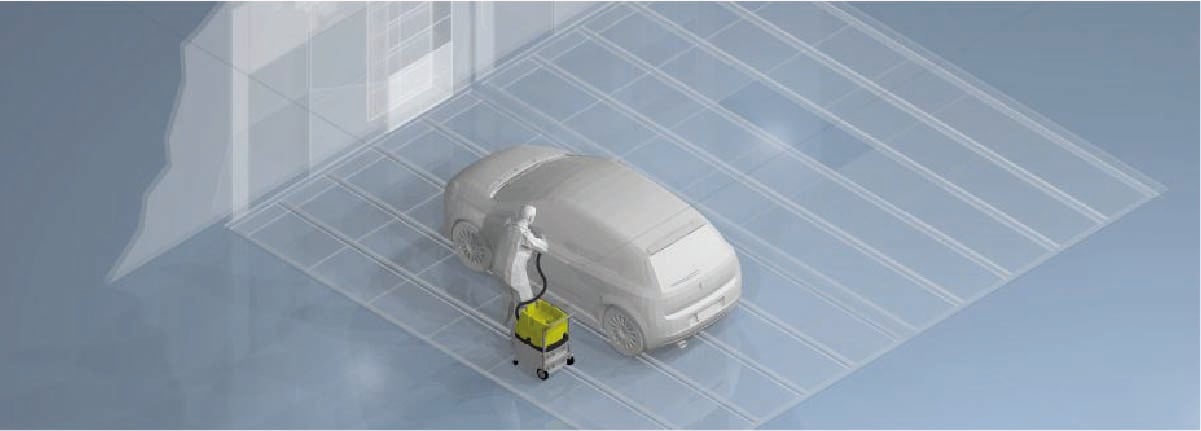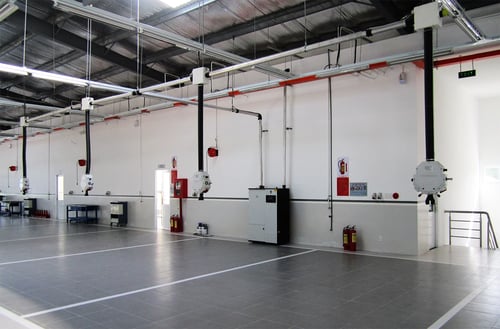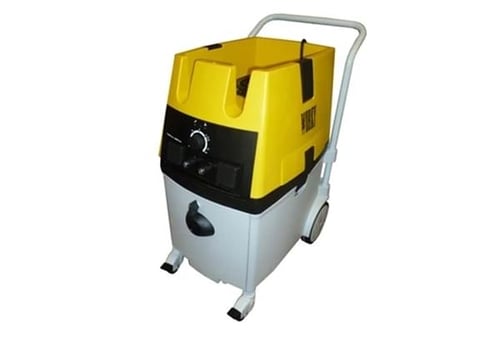 Installing a dust extractor in the bodyshop is not only essential in terms of staff health and safety, it is also beneficial in terms of productivity.
Installing a dust extractor in the bodyshop is not only essential in terms of staff health and safety, it is also beneficial in terms of productivity.
If you are wondering how a dust extraction system can affect efficiency and improve the bodyshop operations, read on!
Sanding dust extraction: what are the benefits?
Installing a dust extraction system helps to:
- create a healthier working environment
- ensure greater productivity
- improve the quality of work
- ensure precision and accuracy of operations
- generate more profits for the company
Here’s a video showing an example of a dust extraction unit:
In this article, we will see how the above-mentioned goals can be achieved with an appropriate dust extraction system.
Below are the topics we will cover. You can click the link to go to the paragraph that interests you.
Table of contents:
- Dry sanding: what it is, what it is used for and what the risks are
- How sanding dust damages productivity
- How to remove dust from the work environment
- Stationary extraction equipment
- Mobile extraction equipment
Dry sanding: what it is, what it is used for and what the risks are
Dry sanding of filler and primer is a fundamental process carried out before painting to smooth the vehicle bodywork and remove imperfections, making surfaces homogenous, ready to be painted.
The sanding process is necessary to ensure a high quality of the paintwork and thus of the final result.
However, the dust produced can have negative consequences, in particular:
- risks for the health of operators working in close contact with it
- settle on the bodywork and affect the quality of the end result of the paintwork
- spreading into the working environment, making it unhealthy
Fillers are substances often used in body shops to fix the imperfections of the bodywork; in this case, sanding is used to smooth the parts treated with this material. Powdered filler suspended in the work environment, however, can contain carcinogenic substances and be toxic, especially for technicians exposed to the danger for long periods of time.
The formation and spread of sanding dust, however, is not only a risk to health, but also to the profitability of the bodyshop. We discuss this in the next section.
How sanding dust damages productivity
The term productivity means the amount of output produced per hour worked. Being productive, therefore, means taking less time to carry out a given process, while always ensuring a high quality of the end result.
There are several factors that can contribute to increasing productivity, such as:
- the presence of cutting-edge machinery and technology
- adequate organisation of the workplace
- the right layout of equipment
- the cleanliness and orderliness of the area
- organisational well-being
- the motivation of employees
Besides being detrimental to health, a dirty and untidy workplace also affects productivity. The dust dispersed in the air makes the environment unliveable and can lead to employees performing less accurately and precisely during operations, especially in the case of allergies or respiratory discomfort.
Furthermore, if particles settle on the bodywork before painting, there is a risk of having to redo the job, wasting valuable time and resources.
This leads to fewer cars being completed during the day and results in less revenue for the company.
To avoid potential risks, ensure quality and profits, operators need to have new technologies to remove sanding dust before it is dispersed. Let's see how.
How to remove sanding dust from the working environment
The solution to prevent dust from being dispersed into the environment is to equip the body shop with a new, modern, dust extractor.
Those systems extract dust from the directly from the orbital sander, ensuring that nothing remains in the working area.
There are two types of dust extraction systems on the market: stationary or mobile.
Fixed dust extraction systems
Fixed systems are the ideal solution when sanding work is carried out over many hours and, as a result, continuous extraction is required. This is usually the case in medium to large bodyshops.

As these systems are fixed, they need to be designed according to the specific needs of each bay, so that they can be adapted to the needs of the operators, but also to the available space and the design of the building.
Let's take a look at the main components of fixed dust extractors below.
Extraction turbines
These are the elements that filter and hold the dust inside them and differ according to the required extracting power. The purified air is then expelled from the working environment.
Suction arms
Suction arms are generally needed in body shops where sanding takes place in different and distant areas, as they allow each area to be reached quickly and easily.
They are very light to move and use, manoeuvrable and corrosion-resistant, and come in different lengths to be chosen according to requirements.
The latest models are even equipped with a halogen spotlight to illuminate the working area and to better spot defects.
Each arm is then equipped with fittings for compressed air distribution and electrical sockets to power all the necessary tools.
Service units
Service units are designed to provide electrical and pneumatic power to the working area. They can be pendant (suspended by a tube containing all the power supplies) or wall-mounted (consisting of an equipped front panel, with all connections at the rear).
Ducts
The dust extraction ducts must be studied and designed to guarantee maximum efficiency and extraction capacity, avoiding problems of occlusion and clogging, minimising pressure losses and equalising the speed of dust flow.
They can be made of aluminium (an inert material that prevents dust from accumulating inside the hose) or polyurethane (ideal for installations requiring very flexible hoses).
It is important that the hoses are reinforced against crushing and pulling, so as not to create difficulties for the operator, and rolled up on a very solid product.
Mobile dust extraction systems
Mobile systems and trolley-mounted units are ideal in bodyshops where extraction needs are temporary or occasional, or where the extraction area is not well defined. Mobile systems are very practical and manoeuvrable, thanks to their extreme compactness and ease of use, while guaranteeing very high performance.

This solution should be considered in cases where the body shop has only a few workstations, perhaps far apart, and sanding processes are short and infrequent.
In order to achieve optimum results and ensure the productivity of the bodyshop, it is necessary to have solutions that are optimally adapted to the needs of the specific facility.
It is not always easy to know which dust extractor is the right one, which is why it is important to rely on a supplier who is not only able to guide the choice, but also to tailor systems to each customer.
WORKY technicians and sales staff will help you make the best decision for your company and your employees, providing you with the most innovative dust extraction solutions on the market!
If you need information, book a free, no-obligation consultation with our experts!



